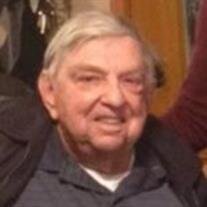Richard Leonard Przybyla
March 3, 1924 - October 20, 2020
Richard Leonard Przybyla 1924-2020 Summary Richard (Dick) Leonard Przybyla was born March 3, 1924 and died October 20, 2020. He is survived by his sister Helen, his children and their spouses, John and Linda Przybyla, Jim and Jill Przybyla... View Obituary & Service Information



